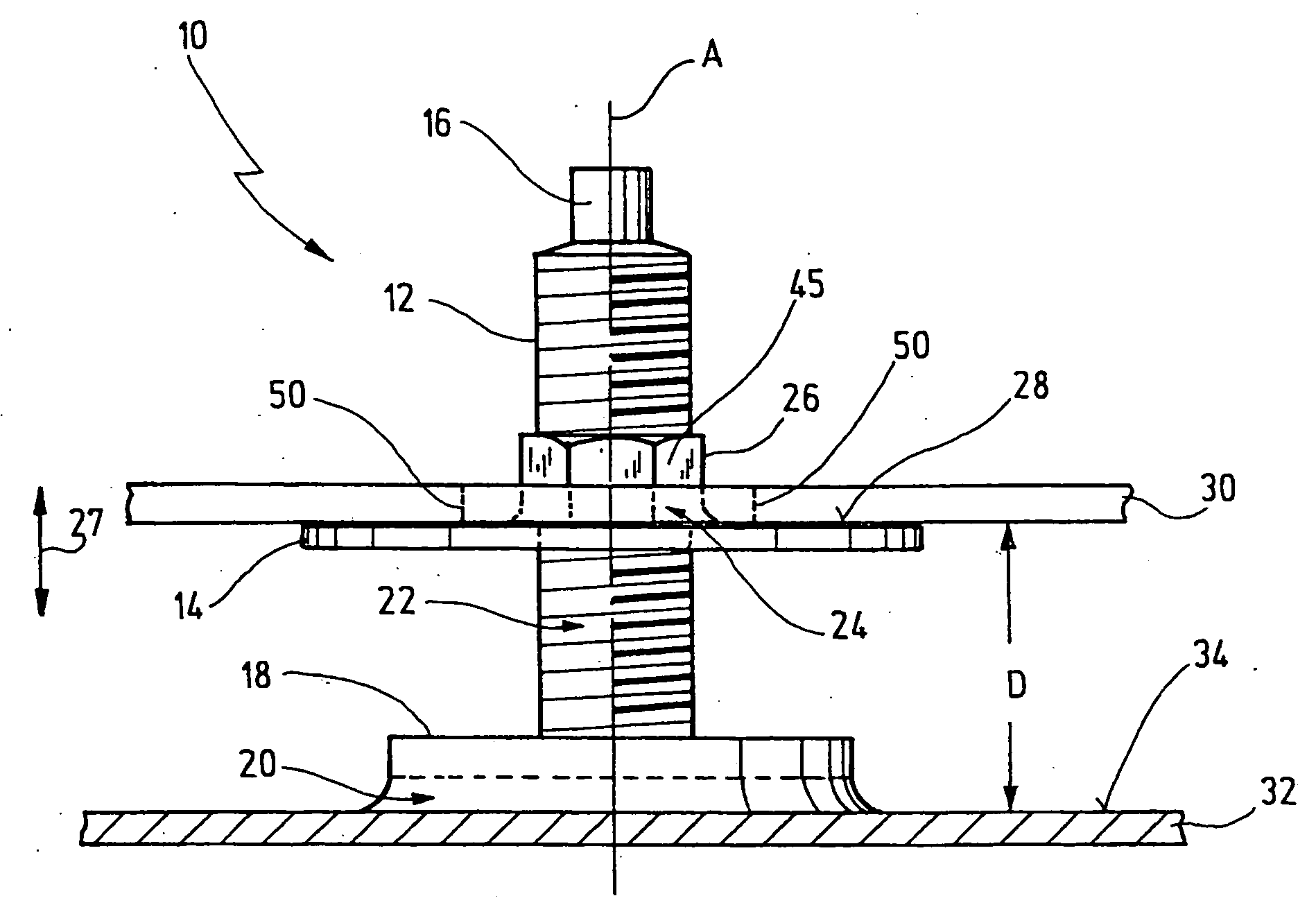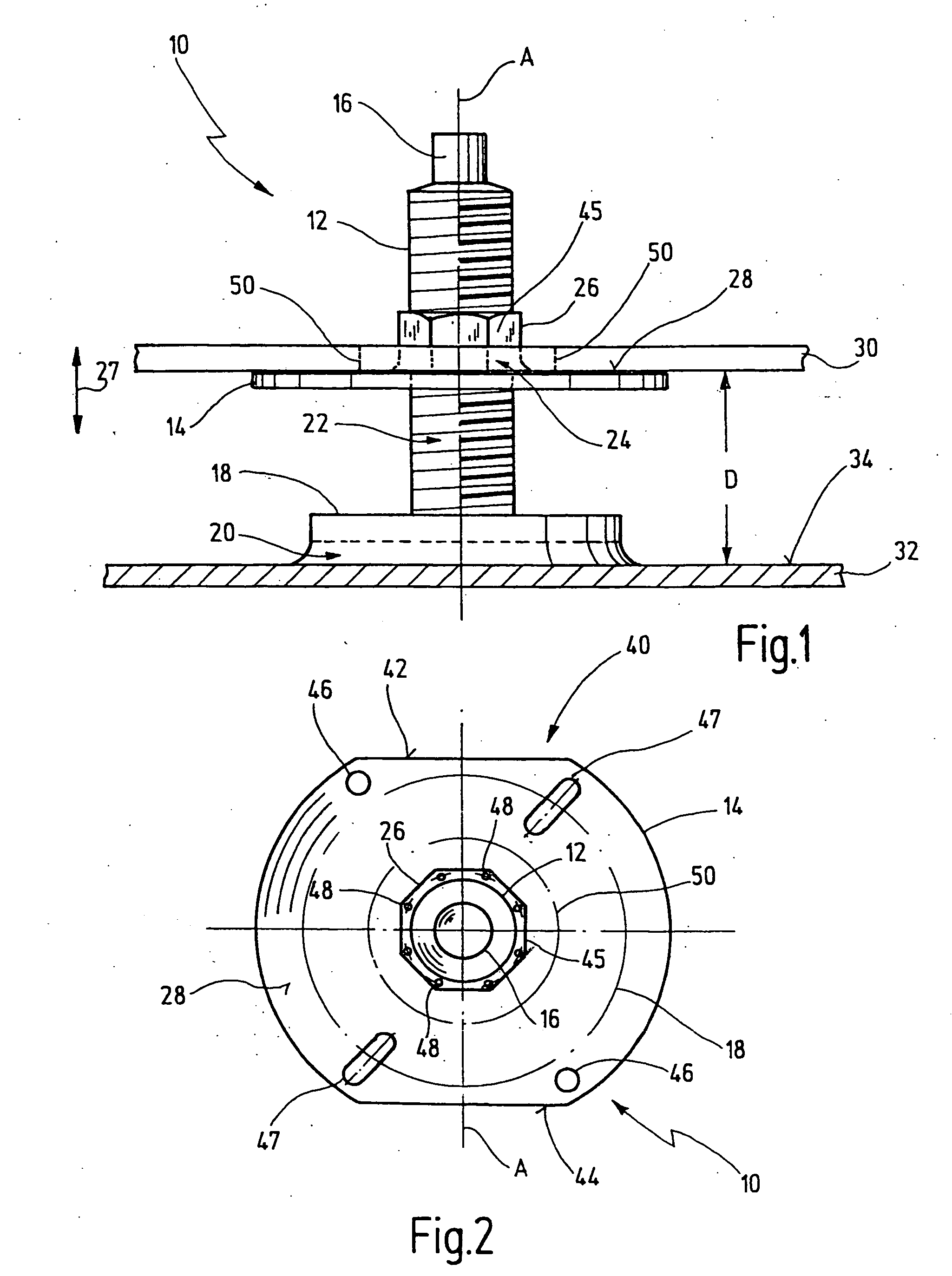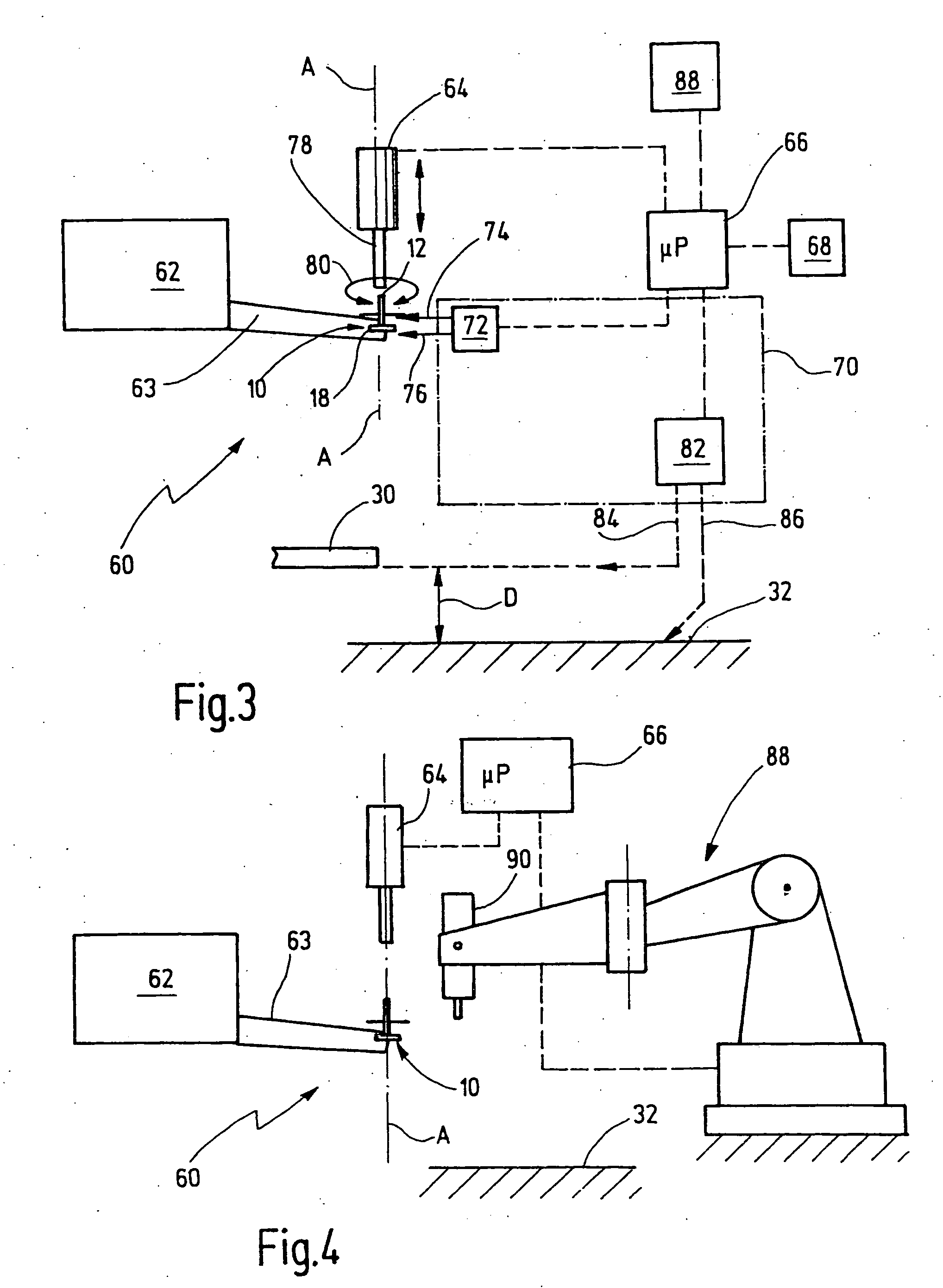Method, fastening system and auxiliary apparatus for fastening a first component to a second component with a precise separation
a technology of auxiliary apparatus and fastening system, which is applied in the field of fastening system, can solve the problems of inability to achieve separation of established separation of spacer screw that has already been screwed into the base component, and achieve the effect of saving both time and cost in manufacturing, facilitating manufacturing, and enlarge the area available for joining
- Summary
- Abstract
- Description
- Claims
- Application Information
AI Technical Summary
Benefits of technology
Problems solved by technology
Method used
Image
Examples
Embodiment Construction
[0018] In the discussion below, a fastening system according to the present invention is generally designated 10. FIG. 1 shows the fastening system 10 in a first embodiment of the present invention. The fastening system 10 includes a preferably cylindrical stud 12. The center axis of the stud 12 is labeled A. The fastening system 10 further includes a support washer 14. The stud may optionally have at one of its axial ends a so-called pilot tip 16. During installation of a component on a base component, the pilot tip 16 makes it easier to find an opening provided in said component. Also, the stud 12 in FIG. 1 transitions at its end facing the base component into a flange 18.
[0019] The stud 12 shown in FIG. 1 is a welding stud, which is to be welded to a base component. For this reason, the bottom part of the flange 18, which is separated from the upper part of the flange 18 in the drawing by a dashed line, constitutes what is known as a burnoff zone 20. When the stud 12 is welded t...
PUM
 Login to View More
Login to View More Abstract
Description
Claims
Application Information
 Login to View More
Login to View More - R&D
- Intellectual Property
- Life Sciences
- Materials
- Tech Scout
- Unparalleled Data Quality
- Higher Quality Content
- 60% Fewer Hallucinations
Browse by: Latest US Patents, China's latest patents, Technical Efficacy Thesaurus, Application Domain, Technology Topic, Popular Technical Reports.
© 2025 PatSnap. All rights reserved.Legal|Privacy policy|Modern Slavery Act Transparency Statement|Sitemap|About US| Contact US: help@patsnap.com



